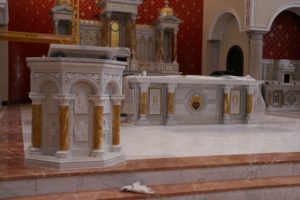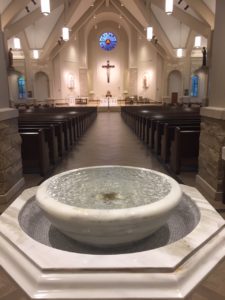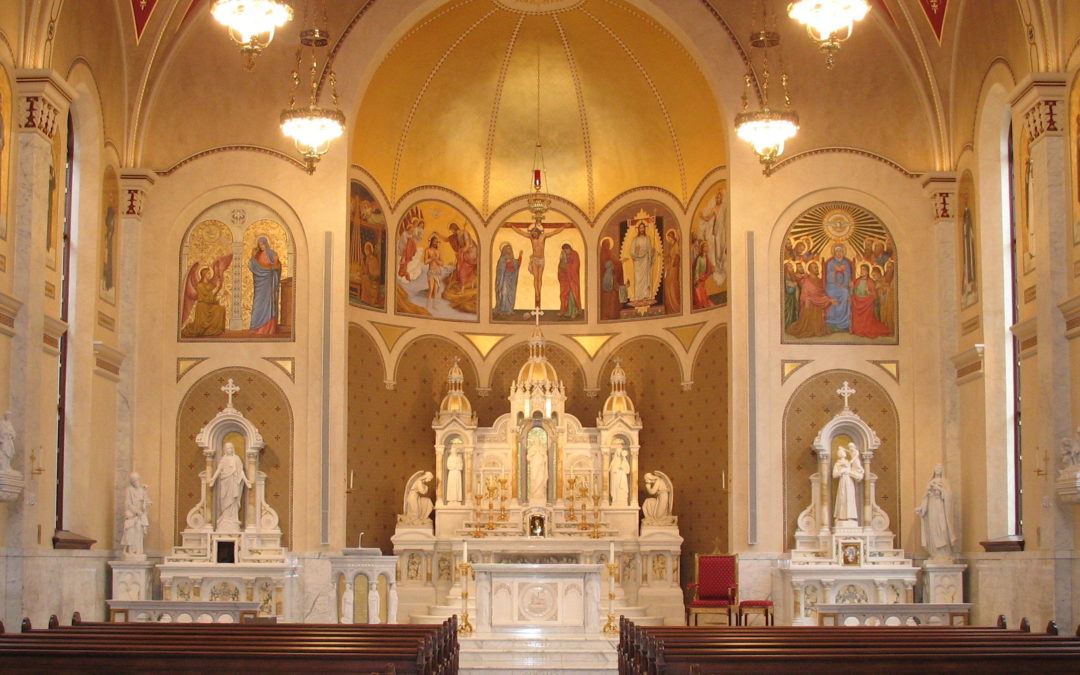Restoring the sanctuary of your church is an intricate and incredibly important project. Your hard work will tell your parishioners and community the story of your church for decades to come. Below is a breakdown of just some of the many important decisions church committees will need to make when restoring their sanctuaries, and some considerations and advice to keep in mind when exploring the many facets of the project.
Altars
 Whether your altar is new or repurposed, a sanctuary renovation must be undertaken with great care. Historically, marble sanctuaries were set in plaster. In the 1960s, epoxy became more common because it’s easier to work with and longer- lasting. But it makes renovations much more challenging. An altar built with epoxy may defy attempts at full disassembly. And when you’re moving larger pieces, there is more chance for damage. This is delicate work best handled by professionals with direct experience.
Whether your altar is new or repurposed, a sanctuary renovation must be undertaken with great care. Historically, marble sanctuaries were set in plaster. In the 1960s, epoxy became more common because it’s easier to work with and longer- lasting. But it makes renovations much more challenging. An altar built with epoxy may defy attempts at full disassembly. And when you’re moving larger pieces, there is more chance for damage. This is delicate work best handled by professionals with direct experience.
Baptismal fonts and pools
 Unless the pool will be drained and refilled frequently, maintenance will be similar to that of a swimming pool. The water will need to be treated and filtered. A slight chemical odor is likely, and noise from the filtration machinery is possible, depending on the size of the pool and where it’s housed. Fiberglass is more affordable than marble and is easier to install but requires more care. Water can penetrate fiberglass over time with prolonged contact. Regardless of materials, there are important safety, liability and local building code factors to consider.
Unless the pool will be drained and refilled frequently, maintenance will be similar to that of a swimming pool. The water will need to be treated and filtered. A slight chemical odor is likely, and noise from the filtration machinery is possible, depending on the size of the pool and where it’s housed. Fiberglass is more affordable than marble and is easier to install but requires more care. Water can penetrate fiberglass over time with prolonged contact. Regardless of materials, there are important safety, liability and local building code factors to consider.
This information is adapted from “Go and Repair My House”: A Guide For Church Renovation Committees from Mazzolini Artcraft. The guide includes advice on selecting statues and acquiring marble items from decommissioned churches. To obtain a free copy, please join our email list. Your address will not be shared with anyone else. For more information about renovations, see our posts about Sacred Heart Church in Peoria Illinois and Fathers of Mercy Chapel in South Union, Kentucky.
